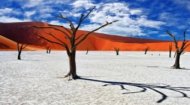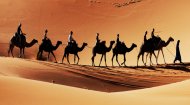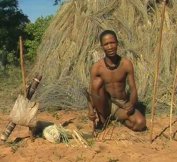|
Kalahari Desert |
Kalahari Desert |
Kalahari Desert | Kalahari Desert |

Kalahari Desert FactsFor those seeking adventure, the Kalahari offers a range of activities, including safaris, quad biking, and hot air balloon rides. One of the most popular attractions in the region is the Kgalagadi Transfrontier Park, which straddles the border between Botswana and South Africa. The park, which covers an area of over 38,000 square kilometres, is renowned for its incredible wildlife sightings, including the famous black-maned Kalahari lions.
In addition to its natural wonders, the Kalahari Desert also boasts a rich history, with several important archaeological sites, including the Tsodilo Hills in Botswana. The hills, which are considered sacred by the San people, are home to over 4,500 ancient rock paintings, some of which are believed to be over 20,000 years old.
In conclusion, the Kalahari Desert is a truly remarkable destination, offering a diverse range of experiences for travelers and adventurers alike. From its rich cultural heritage and fascinating history, to its incredible wildlife and stunning landscapes, the Kalahari is a treasure trove of natural and cultural wonders waiting to be explored. Whether you're seeking adventure, relaxation, or a deeper understanding of the world around us, the Kalahari Desert is sure to leave a lasting impression. |





 Another must-visit destination in the Kalahari is the Central Kalahari Game Reserve in Botswana, the second-largest game reserve in the world. The reserve is home to a diverse array of wildlife, including the endangered African wild dog, and offers visitors the chance to experience the true wilderness of the Kalahari.
Another must-visit destination in the Kalahari is the Central Kalahari Game Reserve in Botswana, the second-largest game reserve in the world. The reserve is home to a diverse array of wildlife, including the endangered African wild dog, and offers visitors the chance to experience the true wilderness of the Kalahari. The Kalahari Desert is also an important center for ecotourism, with several lodges and camps offering sustainable and eco-friendly accommodation options. Many of these establishments are owned and operated by local communities, providing visitors with a unique opportunity to experience the region's rich cultural heritage while supporting the local economy.
The Kalahari Desert is also an important center for ecotourism, with several lodges and camps offering sustainable and eco-friendly accommodation options. Many of these establishments are owned and operated by local communities, providing visitors with a unique opportunity to experience the region's rich cultural heritage while supporting the local economy.


